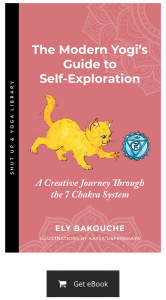“Every form of addiction is bad, no matter whether the narcotic be alcohol or morphine or idealists.”
~Carl Jung
There is such a thing as too much yoga. Anything given an extreme amount of governance over our bodies can begin to take an unhealthy stronghold that does not adhere to balance and moderation.
Being moderate has been a lifelong struggle for me.
My dear late father was an alcoholic while I grew up and I’m more than a little aware of the reality that I am predisposed to being vulnerable to the seductive dance of addiction.
I do my very best to temper that exposure with moderation, not only in drinking alcohol, but in everything I do, and that includes yoga. Most of the time it works, but sometimes, well…

It. Just. Doesn’t.
I get drunk. I eat too much chocolate. I drink too much coffee. I smoke pot. I take a sleeping pill. I smoke a cigar. I project an angry mood onto the students I’m teaching. I get inconsolably depressed. I shut out my friends and emotionally distance myself from my family and my partner.
And yes, sometimes, I do too much yoga.
Balance will always be my north star, but occasionally my moral compass fails me. When it does, getting back on track usually has something to do with self-forgiveness and setting a new template that may help guide me a little better this time ‘round.
In the Hollywood movie Unfaithful (2002), the female character—a married woman played by Diane Lane—is wooed by a younger man and begins a love affair that ends tragically.
I remember listening to interviews following the film in which the director explains that he wanted to be sure in his narrative that there was no distinct, obvious motive for the affair; a happily married woman—in love with her husband—simply allows her desires to be satiated by a man she finds strongly compelling.
In Diane Lane’s interview, she was asked why or how this could happen (for her character) in what appeared to be an emotionally healthy climate of dedication and contentment with her husband. Her answer was simple:
“Sometimes we fail in our convictions.”
Hey, guess what? Sometimes, we fail in our convictions.
So be it. But when we think we’ve found a solution for extreme or addictive behavior by exchanging it for another form of damaging conduct, we’re moving chairs around on the Titanic.
We all know the stories. An alcoholic trades his booze addiction for two packs of cigarettes a day and 12 cups of coffee, mistaking the move sideways as a revelatory progression.
 It’s important to see yoga as a middle path. Give it too much weight and you risk burnout from the very activity you turn to for energy and focus. It is one of the many tools used to carve out a good life—along with diet, other forms of exercise, and healthy relationships—but it’s about as much of a cure-all as that Sunday morning Bloody Mary.
It’s important to see yoga as a middle path. Give it too much weight and you risk burnout from the very activity you turn to for energy and focus. It is one of the many tools used to carve out a good life—along with diet, other forms of exercise, and healthy relationships—but it’s about as much of a cure-all as that Sunday morning Bloody Mary.
Like anything else, yoga can become a disturbing and damaging form of addiction that can breed obsessive behavior and extremism.
This is illustrated no better than in the insightful book Hell-Bent by Benjamin Lorr, in which the author goes through excessive amounts of (Bikram) yoga training and furthers his obsession with yoga workshops that promise euphoria through unnecessary—and potentially harmful—amounts of backbends.
But Mr. Lorr, in his noble and courageous quest for yoga-truth, also presents a balanced point of view from others. He quotes Dennis Dronjic who—after getting into a motorcycle accident so grave that doctors said he would never walk again—exclaims with reasonable perspective:
The yoga didn’t save my life. That was the emergency response team, the surgeons, the rehab specialists. The yoga didn’t give me the drive to recover. That came from some place inside me. What the yoga did is allow me to use the life I had been given back. And what’s the point otherwise? What good is having a body if you can’t use it?
Extremes of any kind can produce unwanted results.

Too often, I can only observe cautiously as I watch yet another new student place all their eggs in the yoga basket. It misses the point because—instead of instilling faith in themselves—they are making yoga responsible for their happiness.
Nothing can carry that much weight alone. The bottom usually falls out and the inevitable conclusion is that perhaps yoga’s not all it’s cracked up to be.
It is. But much like you, it doesn’t like that kind of pressure. When yoga is practiced relentlessly without paying attention to the very body you are working to keep healthy, the results can be damaging.
As a studio owner, I witness students who are obviously doing too much yoga for all the wrong reasons, namely to support other dysfunctions—image issues and eating disorders to list just a few.
Yes, even yoga can be an enabler.
The higher ground of connection, balance, awareness and health is rarely enjoyed in yoga when the fog of excess rolls in and blinds us from a clear path of moderation.
The NCADD (National Council on Alcoholism and Drug Dependence) lists yoga as being helpful in the recovery of addiction:
Yoga cultivates bodily awareness in a kind, nurturing way. It allows students to start connecting with the body and breath and learn to sit and look within. Compassion for oneself arises and with it, a new ability to deal with stressful situations, leading to positive change.
They don’t say how much yoga. And what about yoga for yoga addiction? I can’t seem to find a study on that.
Oh, and guess what The NCADD doesn’t list yoga as? A cure.
If you want to get obsessed with something, start with moderation. It will take the expectation and pressure off you and yoga.
Then, if you occasionally do too much yoga and have to pull yourself back, or you don’t do enough and miss a few classes here and there, well…
Sometimes people fail in their convictions.
Movie spoiler alert! By the way, Richard Gere (who plays Diane Lane’s husband in Unfaithful) failed in his convictions as well, but it could be argued that he went a bit too far and entered into a place of extremes. Upon learning of the affair and confronting his wife’s lover, he builds into a fit of rage and kills him with a snow globe.
Ouch. Being Canadian, that scene hit me hard. We love our snow globes.
Doing too much yoga rarely leads to murder—again, I couldn’t find any studies—but if not done responsibly and in moderation, it could end up killing the very balance you’re trying to achieve for a healthy life.

Illustrations by Ksenia Sapunkova



